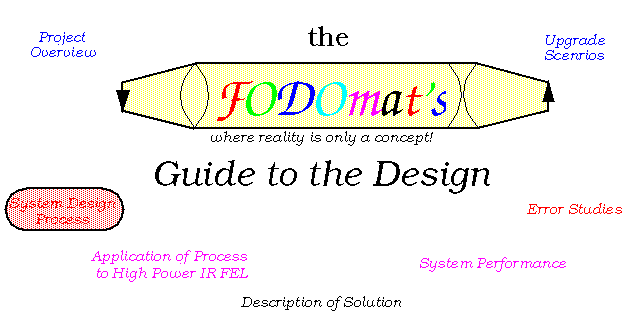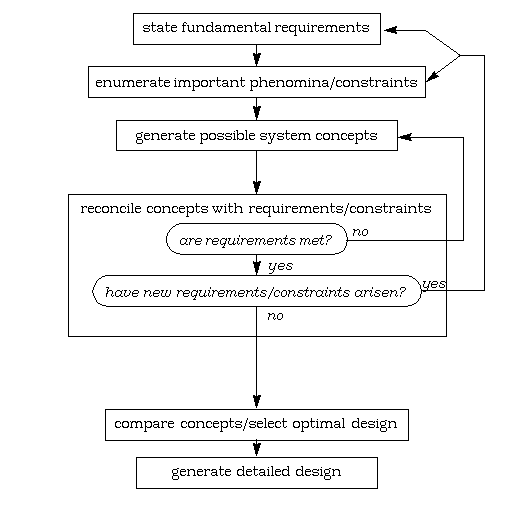
System Design Process
The design of any machine or beam transport system can be developed
using a systematic, requirements-driven process, such as
that illustrated below. Firstly, the fundamental end-user
(here, the FEL) requirements are stated. Secondly, all important
phenomena and/or constraints that potentially couple through the
transport system to limit machine performance are enumerated and
their impact assessed. These results in hand, the designer can
generate potential system concepts, which then must be individually
reconciled with the fundamental requirements and constraints, and
collectively evaluated to select the optimum solution. Iteration
may be required at this stage, inasmuch as additional physical
constraints or end-user requirements may be discovered. Finally,
with an optimized concept in hand, a detailed conceptual design
can be generated.
Schematic of System Design Process

Design efficiency is enhanced and effort reduced through application
of such a method. In the early stages, analytic modeling, expert
judgement, and simple estimates are utilized to provide guidance. Only
in the later stages, at which time all constraints are known and
understood, are detailed numerical optical tools (such as large
design codes) applied. Opportunities for encountering unfulfilled
requirements and missing important phenomena are greatly reduced.
In the FODOmat's A Guide to the Design,
Last modified: 25 March 1997
http://www.jlab.org/~douglas/
is maintained by: douglas@jlab.org


